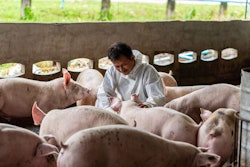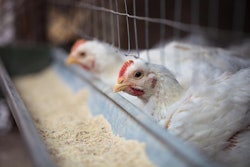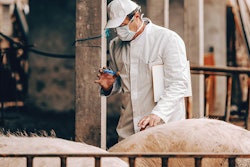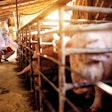
Scientists seek low-cost means of producing enzymes that could offer an alternative to antibiotics
The search for antibiotic alternatives may seem the realm of a high-tech future, but researchers at Concordia University are turning to the past for potential solutions.
Before antibiotics were discovered, Concordia biology professor Adrian Tsang explains, scientists were aware of a class of enzymes called lysozymes, found in things like tears, saliva and milk, that have the capacity to essentially drill into bacteria, killing them. But science ultimately found a way to mass-produce antibiotics before lysozymes, and the potential alternative fell by the wayside.
Tsang, with the help of a US$6 million grant from the Genomic Applications Partnership Program, hopes to bring lysozymes back — or at least make them more available for use in agriculture. Lysozymes derived from egg whites are already commercially available and used in products such as infant formulas and cheese. But the cost of these lysozymes is too high for use outside products with high price points, Tsang said.
To bring the cost down, Tsang’s team started by looking for new lysozymes that could be more effective than those on the market today. Their scan of genes that encode lysozymes identified some 200,000 enzymes of interest — clearly far too many — so they narrowed it down by categorizing the genes by their similarities and selecting a representative sample from each of the groups they identified. Those representative enzymes were then tested in chicken feed to see how they would perform compared to antibiotics with respect to promoting growth performance, Tsang said.
While it’s not clear whether the enzymes helped to fight off infection or supported the immune system in another way, some of the enzymes identified were as effective — and possibly even better — than antibiotics, Tsang said. So the next step is to find a way to produce those particular enzymes at a scale that would also allow them to compete with antibiotics on cost.
To do this, Tsang hopes to use a “cellular factory” — microorganisms that have been genetically programmed specifically with the production of lysozymes in mind.
“Antibiotics, fortunately and unfortunately, are quite inexpensive,” Tsang said. “As a feed additive, we have to bring the cost of production down so they can be used widely.”
While there’s some possibility bacteria could eventually evolve to resist lysozymes as they do antibiotics, the process would likely be slower, Tsang said. Most antibiotics are produced by bacteria themselves, which means the genes they needed to resist antibiotics already existed to allow bacteria to compete with one another. This won’t be the case for lysozymes.
There is also a need, Tsang said, to test how well lysozymes hold up during the feed pelleting process. But with work on this problem and on the creation of the necessary cell factory underway, Tsang said he hoped to have the enzymes to a point where they can consider scaling up production and looking at species other than chickens in 18 months to two years.

















